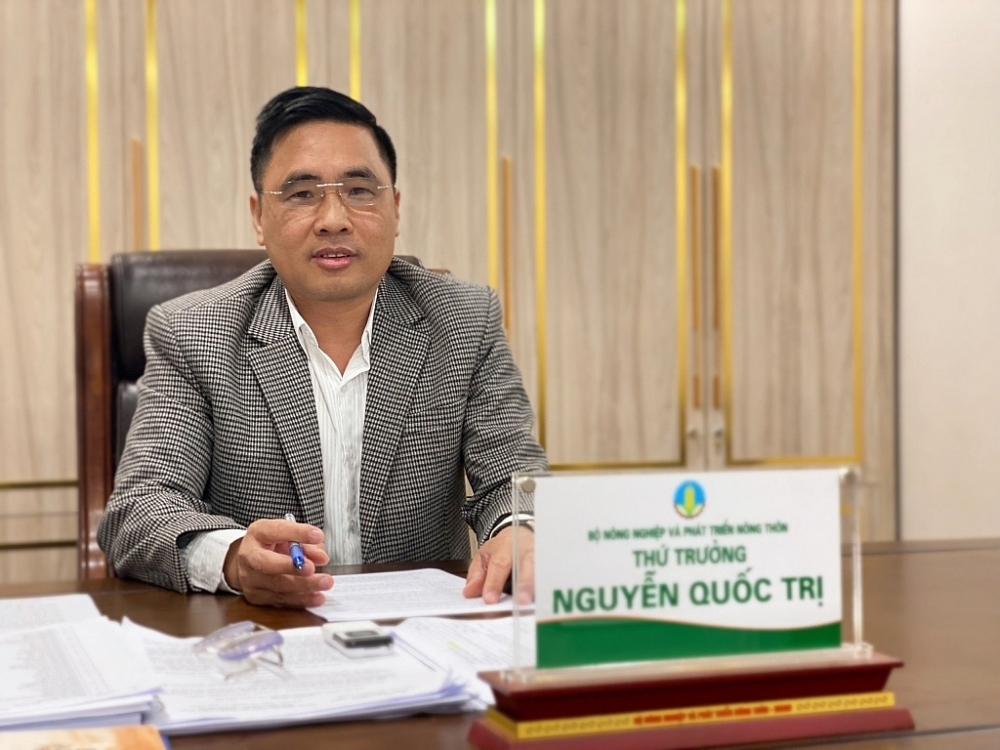| Forest product exports hit US $ 8 billion for the first time |
 |
| Deputy Minister of Agriculture and Rural Development Nguyen Quoc Tri |
Despite facing many difficulties, it is forecasted that this year’s export of wood and wood products will continue to set records, exceeding the initial set target. Can the Deputy Minister share more details about this result?
Deputy Minister Nguyen Quoc Tri: In 2022, the forest product processing and export industry will face many difficulties due to the impact of the Russia-Ukraine conflict, the Covid-19 pandemic and trade lawsuits. However, the export value of forest products in the first eleven months of 2022 is estimated at US $15.57 billion, and the whole year of 2022 is estimated at US16.5 billion, up 4% compared to 2021, exceeding the export target of US $16.3 billion.
The export value of forest products in the first eleven months of 2022 grew mainly because the price of wood pellets increased from US $110/ton in 2021 to US $195/ton in 2022; wood chip price increased from US $130 /ton in 2021 to US $200/ton in 2022. Positive factors in price helped woodchip export increase by 60.8% and wood pellet export by 74.8% over the same period year.
The price of wood pellets and wood chips increased as above because of the impact of the Russia-Ukraine conflict, causing the supply to be broken when burned. As a result, many European countries have stocked wood pellets for heating in the winter. In addition, fuel prices and transportation costs have increased, leading to China, Japan, and South Korea (three countries consuming over 85% of the world’s wood chips) not buying wood chips from major export markets such as Australia, Chile, South Africa, Brazil but turned to buy from Vietnam.
What is the forecast for the export market in 2023, Deputy Minister?
Deputy Minister Nguyen Quoc Tri: Although in 2022, the forest product export and processing industry will complete and exceed the target, many signs show that entering 2023, the industry will face many difficulties in exporting wood products, NTFPs. This comes from a decrease in demand for these products in the US and EU markets as people tighten their spending to fight inflation.
At the 26th Conference of the Parties to the United Nations Framework Convention on Climate Change (COP26), Vietnam joined nearly 150 countries in committing to bringing net emissions to “zero” by 2050. At COP27, Vietnam continues to reaffirm this commitment. Could the Deputy Minister say that in the coming time, what tasks and solutions will the forestry sector implement to contribute to the realization of commitments?
Deputy Minister Nguyen Quoc Tri: The goal of achieving “zero” net emissions by 2050 is an inevitable development trend of the world towards achieving the goal of keeping the global temperature increase at 1.5 degrees Celsius at the end of the century.
At COP26, the world first presented a roadmap to drastically cut greenhouse gas emissions. Implementing this roadmap requires all countries, including Vietnam, to transition drastically to low emissions. As a result, responding to climate change globally has entered a new phase, requiring Vietnam to deeply and substantively participate in joint efforts.
Forestry is an industry that plays a particularly important role in efforts to respond to climate change on both pillars of absorption and mitigation to implement and fulfil Vietnam’s commitments at COP26 and COP27. The forestry sector has been proactive, active and prepared to be ready to contribute to the realization of Vietnam’s commitments, such as: putting several commitments into the Sustainable Forestry Development Strategy; National forestry planning, programs and projects of the sector and perfecting the system of policies and projects on large timber plantations, etc.
To fulfill the above commitments, the forestry sector needs to organize well and effectively implement the Sustainable Forestry Development Strategy; plan programs and projects of the sector, and simultaneously promote the implementation of several tasks and solutions.
The sector is in charge of organizing the implementation of the National Plan for the implementation of the Glasgow Declaration on Forests, and Land Use after the Prime Minister approves it; At the same time, they develop a plan to reduce emissions in agriculture and rural development, including the forestry sector to allocate targets to reduce emissions and increase forest carbon absorption, providing solutions and specific pathways program.
In addition, the sector organizes the implementation of the National Forestry Planning to sustainably manage the area and quality of forests, ensuring the harmony of socio-economic development, defence and security objectives, biodiversity conservation and response to climate change.
The next solution is to integrate tasks and solutions to reduce emissions and increase forest carbon absorption in the implementation of the Sustainable Forestry Development Program; Developing and implementing several projects to reduce emissions and increase forest carbon sequestration to mobilize additional financial resources for the forestry sector to invest in forest protection and development to limit encroachment on forest land, contribute to increasing income, reduce poverty, stabilize production, contribute to the formation of the domestic carbon market and participate in the world carbon market.
Thank you Minister!
